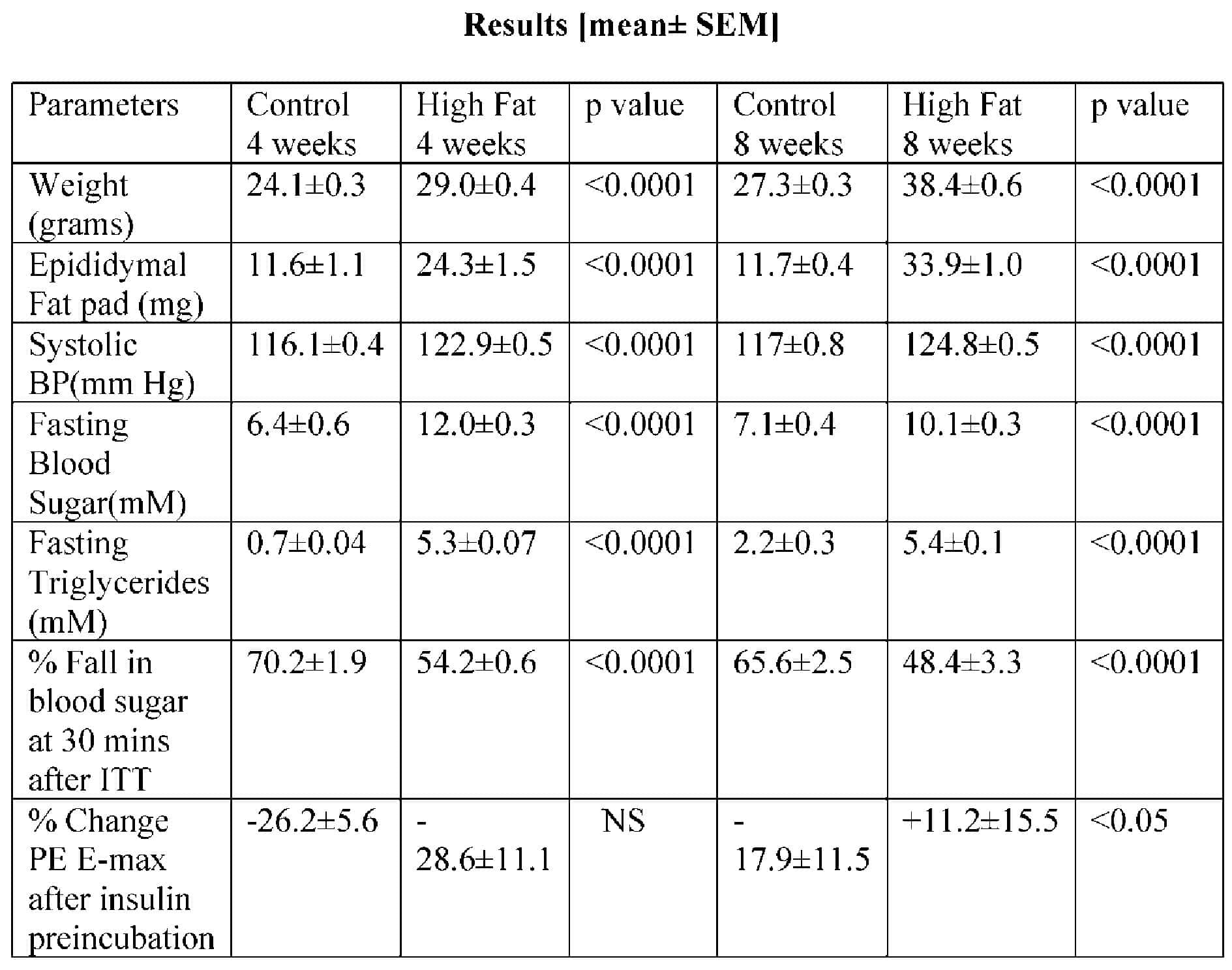Impaired nitric oxide (NO) bioactivity is a prominent feature of the vasculopathy associated with obesity and insulin resistance. Although insulin promotes endothelial NO production, the mechanistic relationship between insulin resistance and endothelial dysfunction is poorly defined. We tested the hypothesis that metabolic insulin resistance precedes vascular insulin resistance in the metabolic syndrome using a model of diet-induced obesity in mice.
Male C57Bl/6 mice receiving an obesogenic diet (35 % fat, 35 % carbohydrate) from weaning were compared with chow-fed controls (8 per group). Body weight, glucocompetence, triglycerides, systolic blood pressure and vasomotor responses in aortic rings ex vivo were assessed after 4 and 8 weeks of feeding.Mice were humanely euthanized with pentobarbital (80 microgram/kg i.p) prior to vascular experiments.
The results are summarised in the table [stastitical methods-unpaired Student’s t test; P < 0.05-significant]. Mice receiving an obesogenic diet developed a typical metabolic syndrome; with obesity, hypertension, hyperglycemia and hypertriglyceridemia evident after 4 and 8 weeks feeding. Whole body insulin resistance, demonstrated by a blunted hypoglycaemic response to exogenous insulin (0.75u/kg i.p) was apparent by 4 weeks. In aortic rings from control mice, pre-incubation with insulin (10 mU/ml, 2 hours) significantly blunted the maximal constriction to phenylephrine (PE; 10 ÁM) – an effect that was blocked by the NO synthase inhibitor L-NMMA (not shown). This vascular effect of insulin was preserved in mice receiving an obesogenic diet for 4 weeks, but was lost after 8 weeks of feeding. Relaxation responses to acetylcholine and nitroprusside were similar in both groups of mice.
In conclusion, these data indicate that the development of whole body insulin resistance in a murine model of obesity precedes the onset of resistance to insulin’s NO-dependent vasodilatory effects.
This research project was conducted with a grant from British Heart Foundation.

